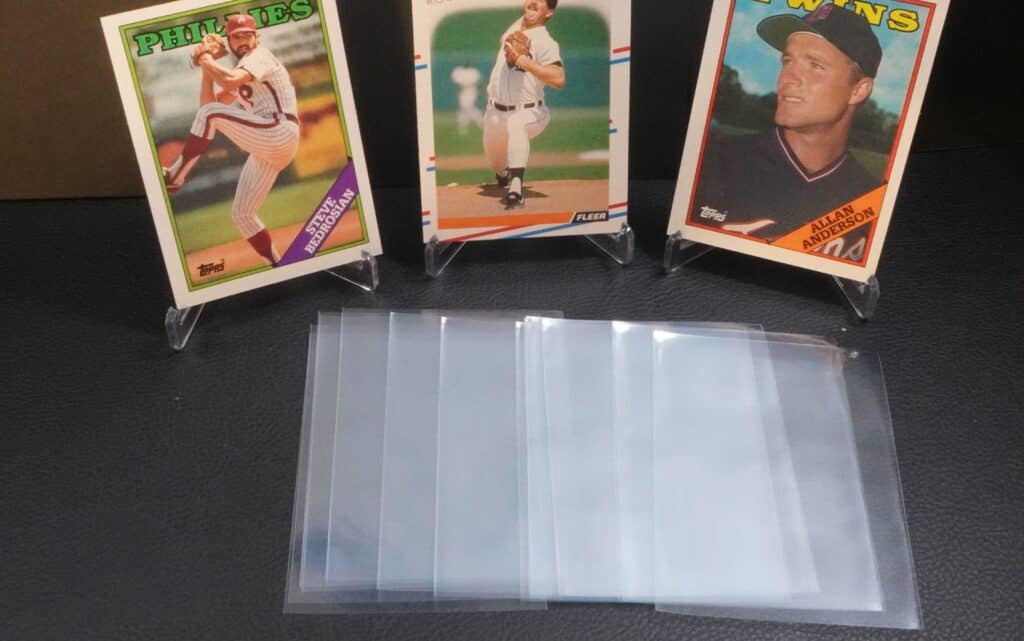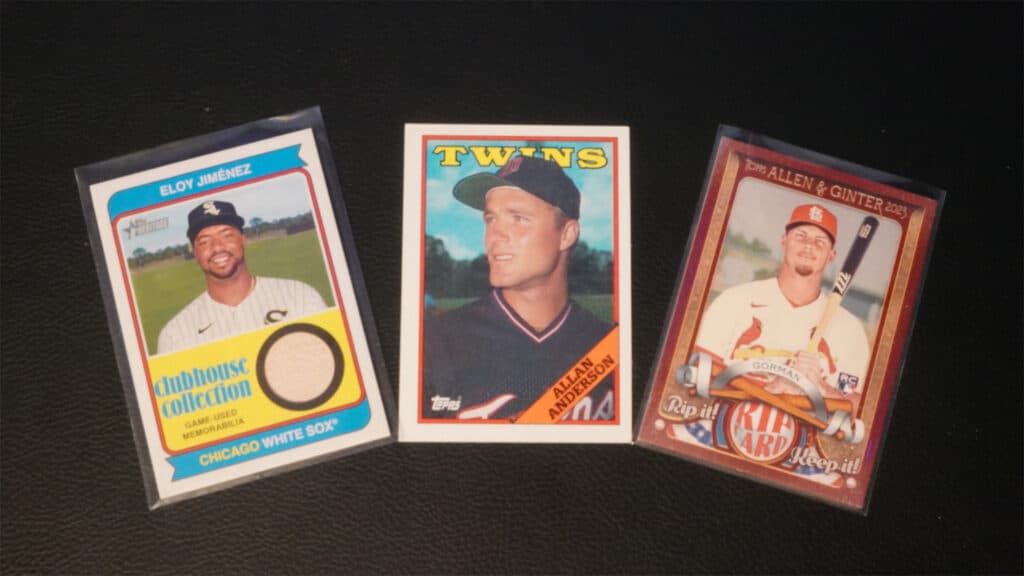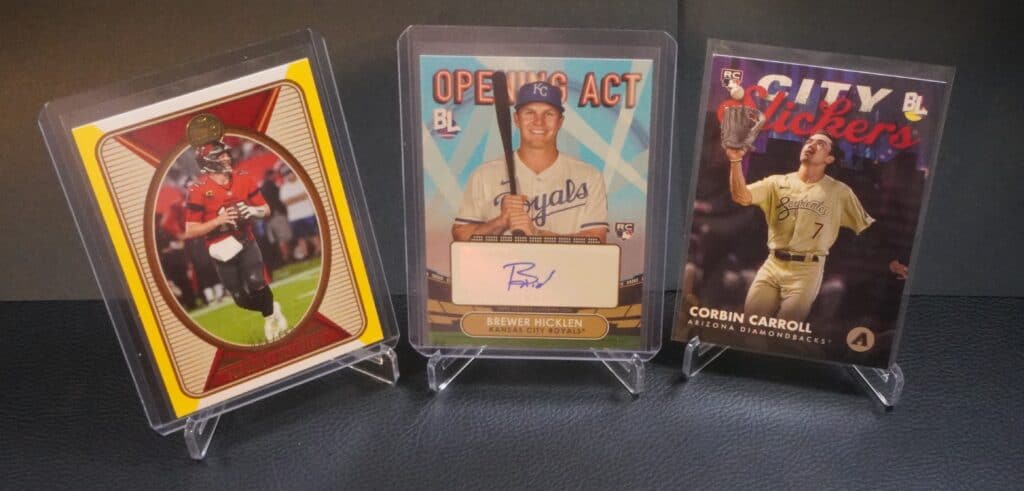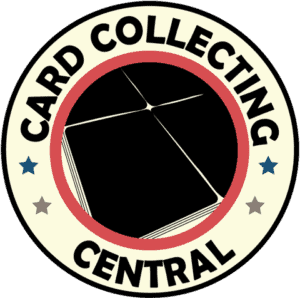
When it comes to protecting sports cards and trading cards in general, the first line of defense is typically the use of sleeves, sometimes referred to as penny sleeves.
But should they be used on every card in your collection?
For most base cards, placing them in a sleeve is not necessary. Cards with any type of value, current or future, such as rookies, current stars, or ones intended to be sold should be sleeved up. This would also include autographs, relics, and sentimental cards to add a minimum layer of protection.
Let’s look at what sleeping cards provide to give a better understanding of which cards should be sleeved, and some alternatives to sleeves if adding minimal protection is wanted, but without the use of individual sleeves.

The Case Against Sleeving Every Sports Card
Two factors go against the idea of sleeving every card, money, way of storage, and space.
With each added sleeve, though it may seem minimal, will increase the thickness of a card in storage.
If using boxes to store your cards, this will decrease the amount of cards being able to be added to the boxes, resulting in more boxes.
Money is another factor, each sleeve though minimal in cost, will add up throughout use.
Think about the average blaster box of cards, having 50 or more cards.
In hobby boxes, you’re looking at 100, or 200 cards for each box, which can add up in cost, and with cards without value, you’re adding cost to something that has no return.
The way you play to store your cards can also have an impact on whether they should all be sleeved.
For instance, if you plan to store all your cards in binders, using pocket pages, then using individual sleeves is not necessary.
The pages themselves are made of similar material that will provide much of the same protection.

When Should Sleeves Be Used
When looking at sleeves for your card collection, it is possible to sleeve every card.
However, this doesn’t mean it should or needs to happen.
Card sleeves provide limited protection from scratches and corner damage.
They are not meant to be the final line of defense for any card of value, for true protection toploaders, or one-touches should be used, but for many cards, the effort of placing a sleeve on it is not worth it.
These though are situations where sleeves should be used:
Current Valuable Card
If you have pulled or purchased a card with some value, think of a card with a signature, some type of relic or memorabilia card, or a card with limited production of a star, or future star player (this would include variations, and serial cards).
This will give initial protection as it is transferred into final storage such as a Toploader, one-touch, card box, etc.
Rookie Cards
In any given product or the sports card trading hobby in general, there is a vast amount of rookie cards and only a few of these rookies will end up giving value to the card from their playing career.
Some rookie cards initially will have value from the high profile nature of that player, think a star rookie quarterback being chosen at the top of the draft, or the next big baseball player.
However, there is also a chance that an unknown rookie can blossom into a star, and adding a sleeve to these cards at least protects them from some damage and elements so that in the future they will still be in pristine condition.
Cards Intended to Be Sold
When selling cards, the condition is of top priority.
Adding a sleeve to each card with the intent to sell protects the card from scratches, corner dings, and dust that buyers will be looking for.
This won’t be the final defense, but will give some protection as it waits to be shipped to its new owner.
Cards Intended to Be Graded
Some sleeves also help protect cards from fingerprints.
This is something that in grading will have a deduction to the grade in the grading process.
New cards that are pulled should be wiped with a microfiber cloth if fingerprints are present, and placed immediately into a sleeve to increase the chances of receiving higher grades.
This is especially true with chrome cards, as the material on the cards can easily attract fingerprints that will affect the final grade of the card.
Top loading Cards
Sleeves should also be used when placing a card inside a toploader.
Toploaders excel at preventing bends, and corner damage.
They can also protect against scratches, but not completely as the top of the toploader remains open.
This can lead to particles like dust entering in, and when removing the card can result in scratches.
Adding a sleeve protects the card much better from this giving added protection in addition to the toploader since there is a tighter fit.
Cards with autographs are another reason sleeves should always be used with toploaders.
This prevents the ink from sticking to the toploader and helps protect that signature when cards are being removed from the toploader.
Final Thoughts
Sleeving sports cards comes down really to personal choice, and how much base-level protection you want to give your cards.
If the situations that recommend sleeving the cards are not present, then sleeving is not necessary.
Sleeves provide some protection to the cards, and will help in the retention of value by limiting many types of possible damage, but weighing these pros and cons is what becomes important in making your decision on sleeving every card.
